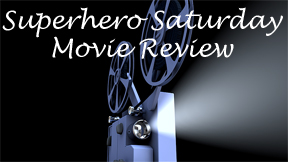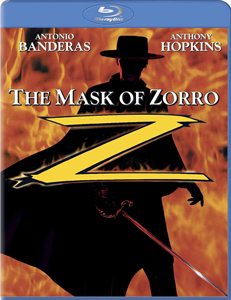Zorro is a rare superhero who doesn’t come from comic books, and indeed he predates the 1938 invention of Superman. He was created in 1919 by pulp novelist Johnston McCulley. The “Zorro” film series, of which the two Antonio Banderas-starring entries are the 10th and 11th American outings, dates back to 1920. Arguably, Zorro is not a superhero (he has no superpowers and did not originate in comics), but he’s listed as such enough times that I’ll categorize him as a proto-superhero for now and let the debate continue.
Joining the superhero era
“The Mask of Zorro” (1998) is the swashbuckler’s first straightforward superhero-movie-era portrayal — one that’s impossible to hate but hard to love, because it’s so down the middle. Zorro is not one man, but rather one man per generation, so this overlong 2-hour, 17-minute epic chronicles the handoff from Anthony Hopkins’ Don Diego de la Vega to Banderas’ Alejandro Murrieta.
Regardless of which man wears the mask, Zorro exists outside of politics and looks out for the interests of the Mexican people of the early 1800s. He doesn’t care whether they are under Spanish or Mexican rule – or under prospective Republic of California rule, as is the hope of villainous governor Don Rafael Montero (Stuart Wilson). Zorro thinks in terms of oppressors and oppressed, not nationalism; he’s like a “Captain Mexico” in this way.

“The Mask of Zorro” (1998)
Director: Martin Campbell
Writers: Johnston McCulley, Ted Elliott, Terry Rossio
Stars: Antonio Banderas, Anthony Hopkins, Catherine Zeta-Jones
The Spanish Banderas – in the prime of his English-language movie stardom — is suave and likeable as the new Zorro, who seeks revenge on Matt Letscher’s Captain Love for killing his brother. After learning sword fighting from the elder Zorro, he also (understandably) finds time to notice Catherine Zeta-Jones’ Elena.
I couldn’t recall if the famous scene where Zorro cuts off Elena’s dress amid a flirty swordfight was from this film (it is) or a parody. The chemistry between the pair is undeniably sexy.
Protecting against parody
Tonally, “The Mask of Zorro” protects against parody by sometimes getting a little silly itself. Notably, Zorro is assailed by a roomful of enemies and he escapes by crawling out of the bottom of the pile, unnoticed. “Teenage Mutant Ninja Turtles II” used this gag earlier in the 1990s. Later in the sequence, he punches a huge guy in the teeth with double-fisted cannonballs, and the guy then spits out his teeth one by one.
Some moments are smile-worthy, like when Elena tells her father that Zorro is “vigorous,” a word with two applicable meanings. Other moments of humor are shrug-worthy, like Zorro’s horse moving just as Zorro is about to land in the saddle from a jump off a roof. (Really, it probably wouldn’t have felt too good to land directly in the saddle anyway.)

This film came out in 1998, but it could’ve been made 20 years earlier or later; it’s a timeless example of beautiful production design and live-action swordplay and stunt work. At one point, Zorro and the bad guys go on a chase through a wooded area on horseback, and it’s like the low-tech answer to the “Return of the Jedi” speeder-bike sequence.
In the final showdown, director Martin Campbell (the “James Bond” saga) makes use of a spectacular cliffside mineshaft set, with various swordfights and people in peril at different vertical levels. Matte paintings might be used for the wide shots, but I’m not sure; I mean that as a compliment.
James Horner gives us appropriately jaunty comedic music, hand-clap-driven dance tunes, and above all a soaring, Spanish-style adventure score.
A clever scheme
The most eyebrow-raising aspect of the screenplay is Montero’s clever scheme to achieve Californian independence by buying it from Santa Anna with Mexico’s own gold. His plan is to stamp the California-mined bars with Spain symbols to make it appear that the gold comes from the ruling dons’ personal stashes.
Although Montero aims to achieve independence while avoiding bloodshed, he’s nonetheless doing it for his own gain, not for the people’s gain. Indeed, he has enslaved hundreds of citizens to work the mine, and he aims to kill them afterward to cover up the scheme.
In the end, though, there’s not enough that’s surprising about “The Mask of Zorro” to make it a great movie – unless you came solely for the stunt work. Despite some grisly aspects like a decapitated head, the violence is mostly stylized. And even in that famous sexy swordfight, Elena’s long hair conveniently covers everything. The long run time is the least family friendly aspect.
“The Mask of Zorro” and its sequel (2005’s “The Legend of Zorro”) aren’t discussed much nowadays; indeed, this film is understandably forgettable, despite its good qualities. But I’m kind of surprised someone isn’t planning a modern-day Zorro tale, considering the way the mask is handed down through the generations and the current pop-cultural need for a Mexican hero.

